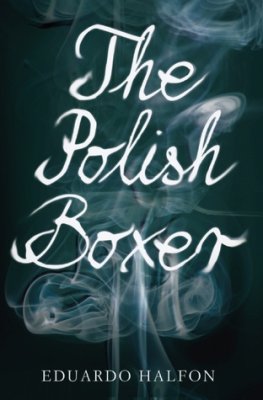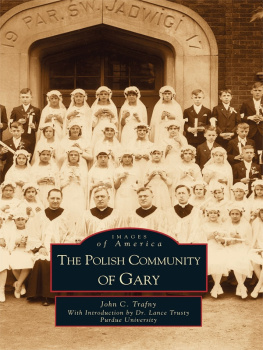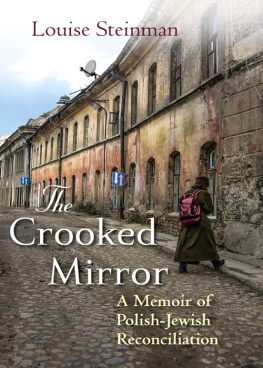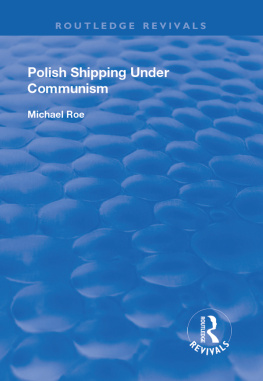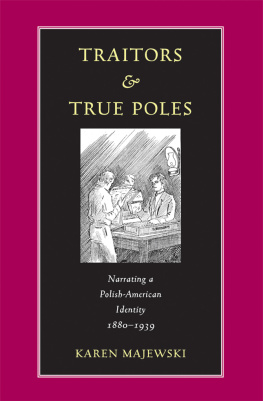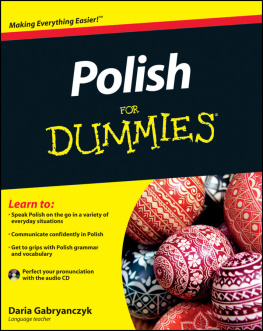Introduction
John J. Bukowczyk
I n another era, when history was made by heroes and villains, Queen Jadwiga whose marriage to Lithuanian Grand Duke Jogaila (later Jagieo) in 1386 birthed the Polish-Lithuanian Commonwealthmay have been the sole image of a Polish heroine for young Polish girls. In more recent times, when historians now recognize structural causes and great social forces as the engines powering historical movements, heroes (and heroines) have receded from the foreground of historical narratives, save for the occasional person of at best minor distinction whom painstaking research, often in novel sources, has rescued from obscurity. While some of these individuals have ably performed the office of role model and exemplar of virtue, more often their lives have been lived in shades of gray, and they are merely representative of the otherwise nondescript persons who have collectively made history. In this rendering, the extraordinarythe leader, the hero or heroinemerely becomes the one astute enough to recognize where the people wanted to go, or where anonymous historical (social, economic, discursive) currents were taking them, and then to lead them there.
But the faceless masses were always composed of individuals who made unique choices and endured their own personal, often considerable, sacrifices to become part of this machine of historical change. It was individual women and men who toiled, marched, wrote, shouted, protested, prayed, voted, fought, taught, learned, lived, and diedand organized. Their stories touch upon many of historys large themesgender, class, ethnicity, race, nationality, and the likewhich may lead us to ruminate about their identity.
Who were the women who made the history of Poland and of the Polish diaspora? How did others see them? How did they see themselves? How did they see and experience family, community, society, and nation? How were their world and consciousness different from those of Polish and Polish American men?
By assembling articles drawn from the pages of The Polish Review and Polish American Studies, this book provides a sampling of research about women in Polish and Polish American history. It is necessarily a small cross-section of what Polish and Polish American women were thinking and doing as they sometimes singly, sometimes in collaboration with others, shaped this nationality groups history. Taken together, their histories are Polands and the Polish diasporas historyfrom the much celebrated Queen Jadwiga to the million everyday Polish heroines.
Through Words and Deeds: Polish and Polish American Women in History follows a roughly chronological organizational structure. The first part, The Polish Female Ideal and Real, explores womanhood in the distant Polish past. The contributions by Thaddeus V. Gromada and Anna Brzeziska examine the mythic and real Jadwiga of Anjou vis--vis the Polish feminine ideal, the importance of historiography, and the relationship between historical sources and the writing of history. Lynn Lubamerskys piece steps beyond the medieval Polish queen to examine the place and role of aristocratic women in the Polish-Lithuanian Commonwealths political and social life during the late Middle Ages. Wadysaw Roczniaks contribution looks at the notable life of a woman known as Polands first female doctor, a life that took her from a remote corner of eastern Poland to the courts of the Ottoman Empire, where she practiced her craft.
At its peak, the multiethnic and multireligious Polish-Lithuanian Commonwealth was the largest state in Europe, stretching from the Black Sea to the Ottoman Empire and from Prussia to Muscovy. Nonetheless, during the eighteenth century, internal weaknesses, external pressures, and domestic and foreign intrigues resulted in the Commonwealths dismemberment. The era of the Polish partitions saw the country divided among Prussia, the Austro-Hungarian Empire, and the Russian Empire; the Commonwealth disappeared from the map of independent and sovereign European states. Partition also fostered a Polish diaspora that included political migrs, adventurers, settlers, and labor migrants. The second section of the book, Bridging Polish and Polish Diasporic Lives, samples the experiences of women in the Polish diaspora. James S. Pula reviews the life of Ernestine Potowska Rose, a Jewish expatriate who struck off on her own and settled in the United States. There, in the mid-nineteenth century, she campaigned for womens rightsspecifically, for legislation to permit married women to own property. Contributions by Jan Molenda and Laura Anker examine the role of Polish female labor migrants in the late nineteenth- and early twentieth-century industrial economies of, respectively, the Rhein-Westphalia region of Germany and the industrial region of Connecticut. Next, Polish immigrant women as political and social actors receive treatment in pieces by William J. Galush and Robert Szymczak. The latter gives an example of immigrant women taking an intense interest in the Polish nationalist struggle and in the welfare of their ancestral homeland, reconstituted as an independent state after World War I under the terms of the Treaty of Versailles. The last three chapters in the section examine Polish women in relation to social transformation, cultural preservation, and national regeneration in Poland and Polish America. Karen Majewski and Lori A. Matten illuminate the role of Polish immigrant women in what some observers construed as the crisis of the immigrant and ethnic family under immigration conditions. Finally, Nameeta Mathurs contribution reveals the role envisioned for Polish women in their countrys rebirth.
The third section of the collection, Image, Identities, and Consciousness: Gender, Class, and Ethnicity Entwined, considers the subjective dimensions of Polish womens lives. John J. Bukowczyk discusses the stereotypingand othering of Polish American women and their relationship to Polish American feminism. Grazyna J. Kozaczka, Rita Gladsky, and Boena Karwowska present rich, varied expressions of Polish female identities as developed in Polish ethnic and migr fiction writing. The concluding chapter, by Halina Filipowicz, provides a sophisticated theoretical context and perspective on the subject and themes of the volume. At the end of the collection is a select list of additional readings for readers who wish to explore these subjects and themes further.


